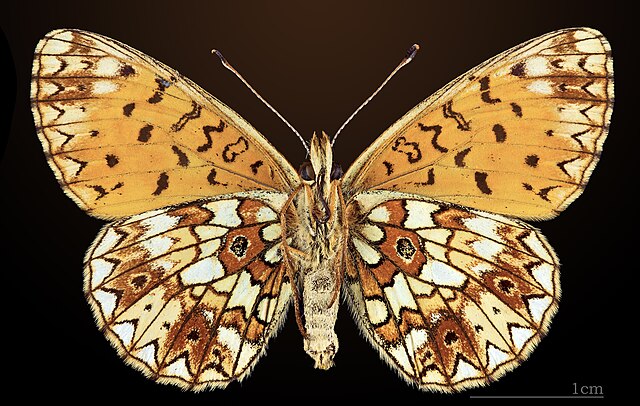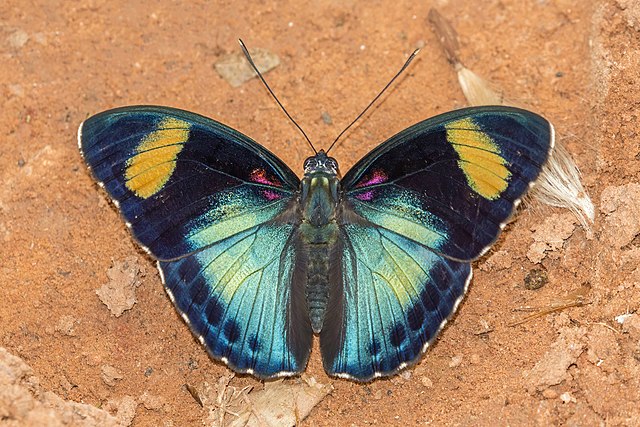Small pearl-bordered fritillary
Boloria selene, known in Europe as the small pearl-bordered fritillary and in North America as the silver-bordered fritillary, is a species of butterfly of the family Nymphalidae. It is found across Europe, Asia and North America, and feeds exclusively on violets in its larval stages. This species prefers wet grassland habitats, where its larval food source, violets, are found. It overwinters in its larval stage, and eggs hatch in the late summer to early autumn. Members of this species are prey for multiple types of birds and other insects.
Small pearl-bordered fritillary
Dorsal side
Ventral side
Dorsal view
The Nymphalidae are the largest family of butterflies, with more than 6,000 species distributed throughout most of the world. Belonging to the superfamily Papilionoidea, they are usually medium-sized to large butterflies. Most species have a reduced pair of forelegs and many hold their colourful wings flat when resting. They are also called brush-footed butterflies or four-footed butterflies, because they are known to stand on only four legs while the other two are curled up; in some species, these forelegs have a brush-like set of hairs, which gives this family its other common name. Many species are brightly coloured and include popular species such as the emperors, monarch butterfly, admirals, tortoiseshells, and fritillaries. However, the under wings are, in contrast, often dull and in some species look remarkably like dead leaves, or are much paler, producing a cryptic effect that helps the butterflies blend into their surroundings.
Nymphalidae
Peacock (Aglais io)
Crimson-spotted forester (Euphaedra themis)
Monarch butterflies (Danaus plexippus)








